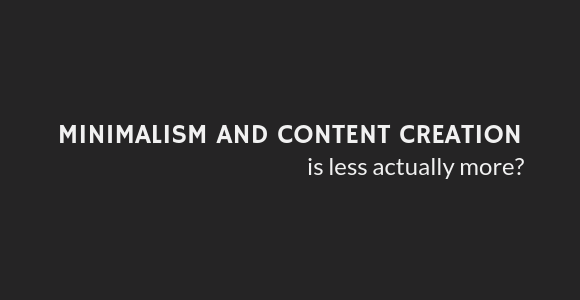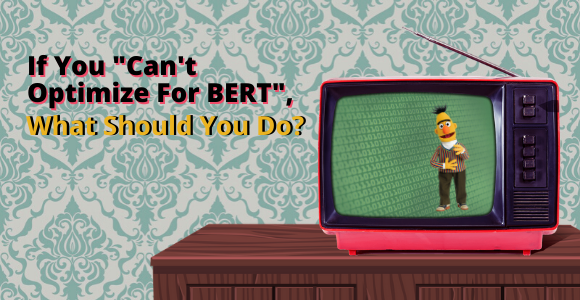The more the better, right? Maybe in some cases. But, when it comes to publishing written or visual content on your website, and especially social media channels, it’s quite debatable whether that’s true. Minimalism has been an uprising trend in many areas of our lives but how does it relate to content creation and distribution? This article will present to you a marketer’s point of view, but it will still touch base with the SEO side of writing.
Hopefully, by the end of the article, you will have a better understanding of what a well-rounded content strategy might look and sound like.
The Minimalist Trend Taking Over
Why is that and what it means
From a capsule wardrobe and Scandinavian-style interior to pastel colors, simplified architecture and the “less is more” mantra chanted at every corner, that’s what minimalism is in a nutshell. The digital marketing world, though, has taken this trend and has put its own spin on it.
In an article about customer experience, the Marketing Insider Group predicted that 2018 will be marked as a year in which people will gradually continue trying to declutter their lives. In the overwhelmingly saturated world of information shared in the digital space, we all need a little break.
This means that content creation experts need to find a way to adapt.
The Time Deficiency Issue
Ain’t nobody got time for low-quality content
Quality content creation takes time. Especially, if it’s the type that speaks the language of your audience. Back in 2014, the Content Marketing Institute stated that time was the biggest challenge for marketers. Actually, the lack of it. In 2018, their report shows that things have shifted towards a lack of clear focus for the content strategy as a whole as well.
Not only is the reader’s time limited to a couple of sources, each fiercely fighting for their attention, but the time spent on content creation itself is in short supply.
So the focus should be on carefully crafting the type of blogs, emails, and pieces that will attract the right audience. This means identifying the verbiage and type of expressions that will make people stay.
That being said, it’s still extremely important to be regular with providing your readers with a fresh and helpful content. However, overdoing it and improper targeting makes a bad impression and is a waste of everybody’s time.
Thus, the minimalistic approach is not necessarily about putting less out there.
It’s about making each content piece purposeful.
The Problem with Word Stuffing
Gravitating around what your reader is actually interested in
In this very informative piece on SEO-friendly content writing for NLP (Natural Language Processing – a fancy schmancy abbreviation for the way Google reads and analyzes a text), Justin Briggs gives a great example of how using more words won’t necessarily help the user experience.
Long story short:
Saying “The safe internal temperature for cooked chicken is 165° Fahrenheit.”
is better in terms of both SEO and content creation than
“The most precise way of telling if the chicken is done is to reach a perfect internal temperature of 165 degrees for dark meat.”
Overposting Can Kill Your Image
There has been a change in the cultural zeitgeist and it’s time to acknowledge it
Clickbait articles crowding the Internet space, a myriad of digital publications, and an endless newsfeed of popping content begging for our attention. It’s natural we start wanting less noise and a lousy copy jumping out of every corner. What we need is carefully curated website content that will correspond with our interests.
What does that mean for brands and businesses?
Simply that they should first be fully aware who their main target audience is and tailor their content creation strategy accordingly. If you work with professional website writers, order blog articles that directly address answers your customers will be looking for. Keeping it straight to the point and concise is what it’s all about.
When you’re planning your content marketing campaign, one key aspect to consider is how often you want to publish quality content and which channels, format, and content type you will be using. Obviously, it’s not a one-size-fits-all recipe.
What would be a bad example then?
Say you are a cleaning company that uses its Twitter feed to post memes about drinking wine and waiting for the work week to be over. You know, the type of things we all identify with, sometimes. Yes, there are audiences that might find this appealing and even entertaining. Are they really your target, though? How is this helping your brand’s image and equity?
Taglines and Slogans: Minimalism at Its Finest
The catch of the catchphrase
These are one of the trickiest elements to come up with even for skilled writers. It’s because summarizing the essence requires putting it in simple, yet unique terms that subtly and masterfully get the brand’s message across.
From a marketing standpoint, they can help your brand’s recognition skyrocket.
Based exactly on that principles that “less is more”, good slogans and taglines represent your ability to sell your business or concept in a minimalistic way.
Think Nike (“Just do it!”), Apple (“Think different”), or McDonald’s (“I’m Lovin’ It”).
So, make sure that whoever is charged with the content creation for your website or social media channels will also consider how to craft a good slogan or tagline or work in accordance to the ones you have already.
Consistency and clarity are key, as usual.
As I made this a point in the article, weaving in the principles of minimalism into your content strategy is not just a good thing to do, but it might become the norm in the future. Only time will show, but skilled professional content writers are already riding the waves of change. How about you?







